lives of the earliest people and hunters and Gatherers
Lives of earliest people and hunters and Gatherers
People started establishing in the subcontinent some 2 million years ago. They led their lives as hunters and Gatherers. They used to hunt wild animals, collected roots, fruits, nuts, farm produce and survived on these collections. Although they need to move from one place to another. They were wanderers. However there are many reasons behind this.
- If hunters Gatherers would have stayed at one place only then they would have used up all the resources and food plants available there. And then there would not have left anything for future use. This is the reason they need to moved to another place in search of food.
- Animals wander in search of their prey. Animals like deer and cattle wanted to find area for grazing. Hunters follow their footsteps to trap them.
- Different plants bear different fruit in different seasons. So people wandered to have those season fruits.
- Water is essential for everybody’ssurvival, may it be people, animals or plants. Sources of water is rivers, lakes and streams. Some rivers and lakes are perennial*, while others are seasonal. People living on the banks of seasonal water bodies need to wander to areas with water especially during winter season or summer season.
N.B. perennial- having water all throughout the year.
Knowing the earliest people
Hunters and gatherers were skilled enough to make tools for their use. They used stone, metal, bone, wood to make tools for hunting. Stone tools were the best which were used for the following:
- Cut scrape bark ( from trees) Hides* ( animals skin)
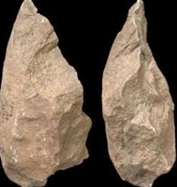
- Fruits and roots
- Meat and bones
- Digging the ground in search of edible roots*
- Stitching clothes made of animals skin ( worn by hunters and gatherers)
Other than stone tools, wooden tools were also of great use . Wooden tools were used as firewood, to make huts and ofcourse tools.
Sometime stone tools were attached to handle made of bones and wood to give it a look of Spears and arrows.
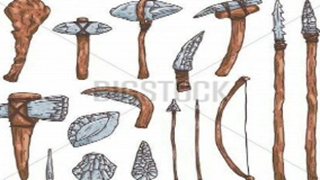
N.B: edible: that can be eaten
Hides: animal's skin
Wooden tools
Sites of hunters and gatherers
Archaeologists have found that the places like bhimbetka hunsgi and kurnool claves are the places where hunters gatherers have existed in the past.Bhimbetka is now in Madhya Pradesh. It is the oldest site known to have caves and rockshelters.People used to prefer rockshelters as it protected them from wind rain and heat. These rockshelters were found in the vicinity of the Narmada valley.
Stone tools were of great importance to early people so they preferred residing in places where good quality stones were found.
Caves were the places where early people used to live and in the these cave one could find wall paintings. These wall paintings depicted the lives of early people as to how they lead their lives. These paintings were basically of wild animals as to how they were hunted. They were drawn with great skills and accuracy.
Sites are the places where ancient remains are found. These ancient remains are pots, utensils that were used by the early people. Jewelry, clothes, tools which were used by early people in hunting or in their daily lives were buried under the earth surface or sometimes under the water surface.
lives of the earliest people and hunters and Gatherers
LIVES OF THE EARLIEST PEOPLE
ON THE MOVE: HUNTER - GATHERERS
- The evidence of human survival on the subcontinent was dated back about 2 million years ago.
- They described as Hunters – Gatherers as their lives depended on hunting the wild animals and gathering the forest produce such as fruits, roots, nuts, seeds, leaves, stalks and eggs.
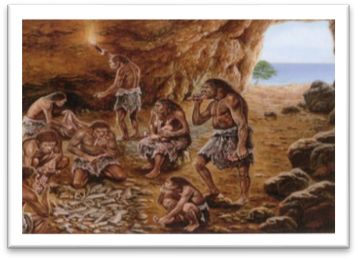
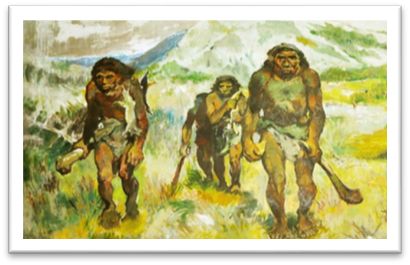
- But they could not stay too long at one place.
The reasons for their movement:
- In search of food, move to another place – Staying long at one place means eaten all the available resources (forest produce and animals) and unavailability of food at that place.
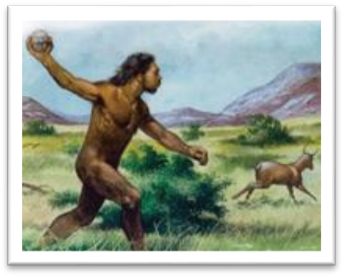
- Trace the path of animals' movement – Hunters followed the movement of the animals.

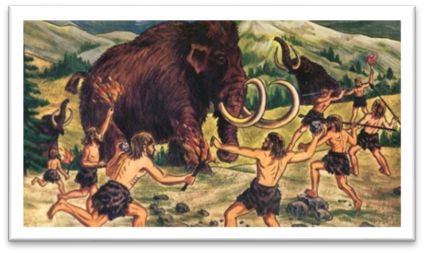
- Seasonal fruits/ flowers on plants and trees – People had to move from season to season in search of different kinds of plants.
- Availability of water: Water is essential for the survival of people, plants and animals and it found in lakes, streams and rivers. Early people lived around these places. If these water bodies were not perennial (water throughout the year), they moved in search of water to another place.
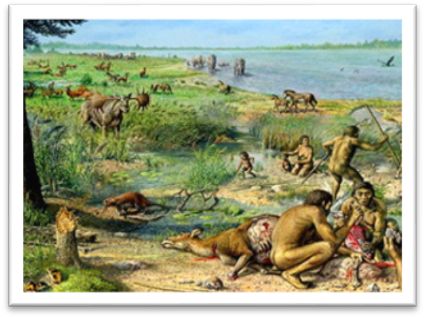
KNOWING THE EARLIEST PEOPLE LIVES
Archaeological findings tell us -
- The things used by hunters –gatherers.
- People made tools of wood, bone and stone.
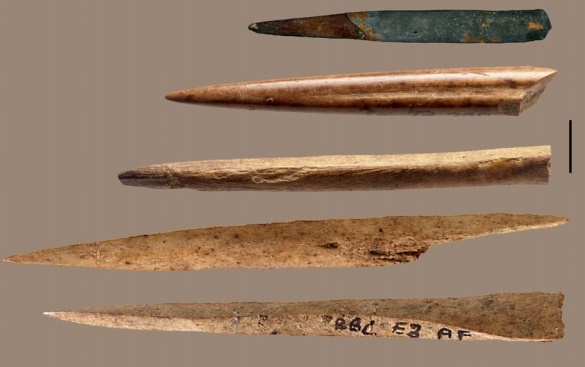
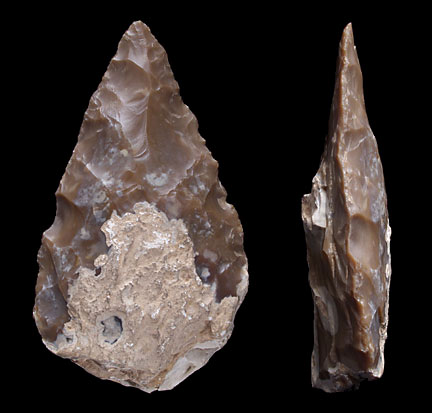
- Stone tools have survived best and used
- to cut meat and bone
- scrape bark(from trees) and hides(animal skin)
- chop fruits and roots
- to make spears and arrows (bone/wooden handle attached ) for hunting
- to chop wood used as firewood
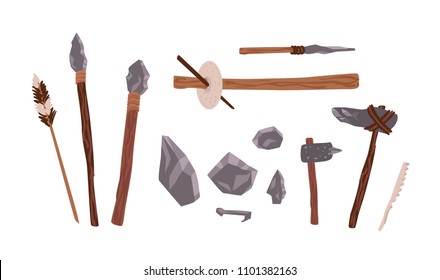
- Wood was used to make huts and tools.
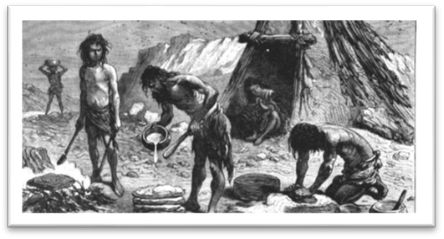
SITES OF HUNTERS – GATHERERS
Sites:
- The places where the remains of things (tools, pots, buildings etc.) were found, which were used and left behind by people.
- May be found
- on the surface of the earth
- buried under the earth
- under water
Archaeologists have found sites of hunter – gatherers:
-
- Bhimketka
- Hunsgi
- Kurnool caves
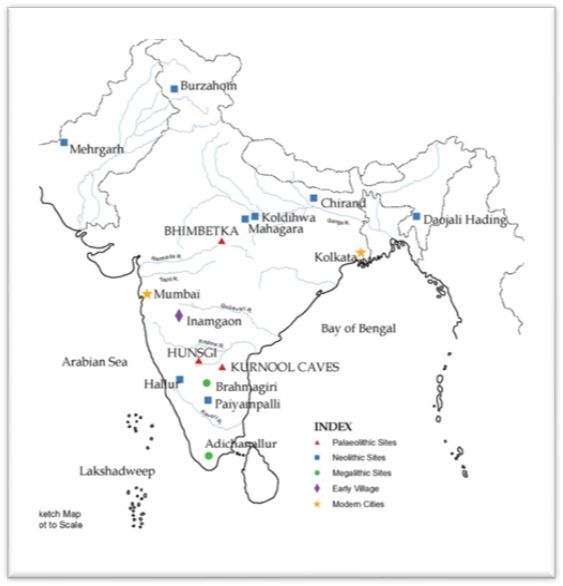
Location of the sites:
- Near sources of water
- rivers
- lakes
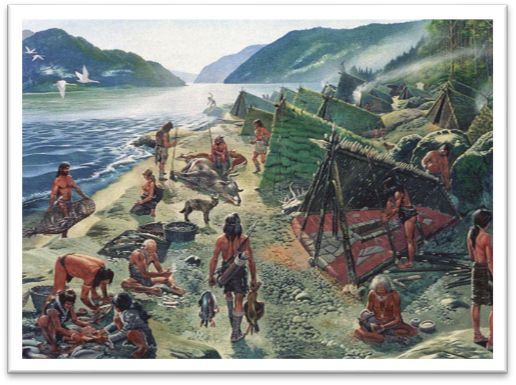
- Places where good quality stones available(as stone tools were important)
Bhimbetka ( Madhya Pradesh):
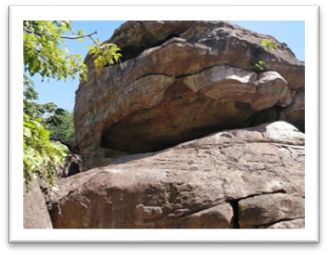
- An old site with caves and rock shelters.
- Close to the Narmada river
- Natural caves chosen by the people as they provided shelter from rain, heat and wind.
- People did paintings on the walls of these caves.
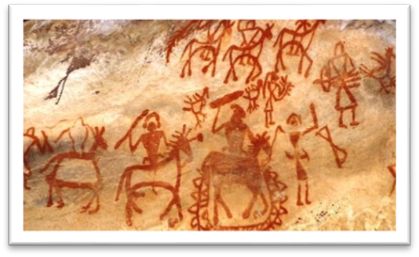
Stone tools & uses of Fire
Stone tools and uses of fire
Archaeologists have found traces of ash in Kurnool caves. This made them conclude that early people were familiar with the uses of fire. They used fire for many purposes like as a source of light, to scare away wild animals, to roast their meat.
Archaeologists have called the earliest period as the paleolithic age which ranged from 2 millions to 12000 years ago. After that from 12000 years ago, a drastic environment changes could be seen. The Age was called mesolithic age.
The term paleolithic is derived from the Greek words paleo meaning old, while lithos meaning stone. The Paleolithic age covered the maximum era of human history. Mesolithic means middle stone. In this period tiny stone were available. These tiny stones were bind to the bones to make saws and sickles.
The age after mesolithic was called Neolithic age. This age started 10000 years ago.
Stone tools & uses of Fire
STONE TOOLS AND USES OF FIRE
- Archaeologists describe the time period of Hunters-Gatherers as STONE AGE.
- Stone was used as tools and weapons and they took shelters in the caves in diverse climatic conditions.
- Stone age can be divided into three periods-
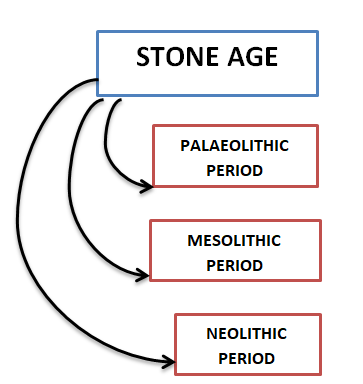
PALAEOLITHIC PERIOD:
- The earliest period.
- Comes from two Greek words, 'palaeo' means old, and 'lithos' means stone.
- Period extends from 2 million years ago to about 12,000 years ago.
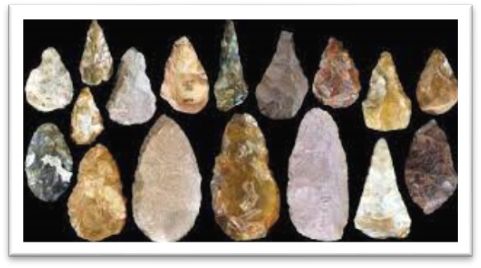
- The long span further divided into three parts –
- Lower Palaeolithic
- Middle Palaeolithic
- Upper Palaeolithic
- This period covers 99% of human history.
MESOLITHIC PERIOD:
- It is also called Middle Stone Age.
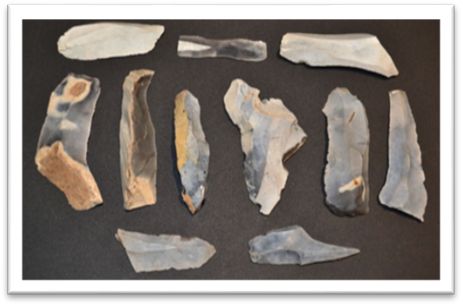
- The period of environmental changes.
- Began about 12,000 years ago till about 10,000 years ago.
- Tiny stone tools found in this period, called MICROLITHS.
- Handles of bone or wood attached with the Microliths to make tools i.e. saws and sickles.
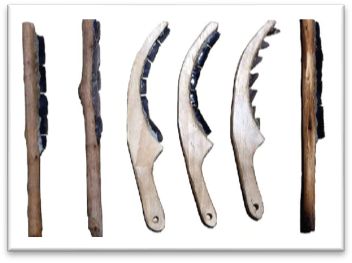
- Old tools continued with the new ones.
NEOLITHIC PERIOD:
- 'Neo' means new, it's a New stone age.
- From about 10,000 years ago
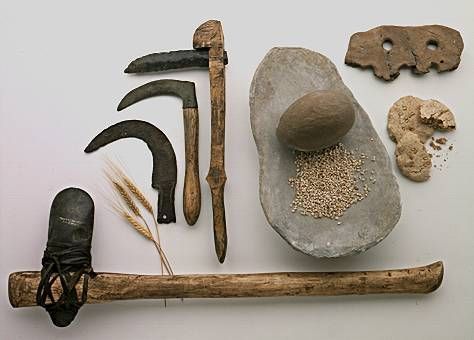
EVOLUTION OF FIRE AND ITS USES:
- Traces of ashes have been found in the Kurnool Caves of Andhra Pradesh.
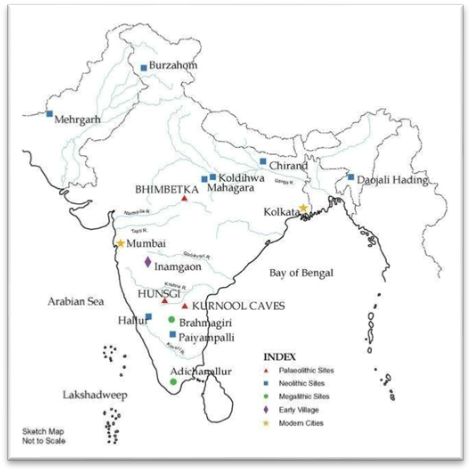
- The people were familiar with the use of fire.
- a source of light
- to roast meat
- to scare away animals
- The first reported use of fire in the Indian subcontinent was from 18,000-20,000 years ago.
Changing environment
Changing of environment
Around 12000 years ago, there was a remarkable change in the environment condition. The weather became warmer. This shift in the environment condition led to the development of grasslands.
With the development of grassy lands, animals like deer, antelopes, cattle, increased in number. Their survival were based on grassy lands.
Hunters now instead of hunting them started studying their food habits and breading habits. They started herding and rearing these animals. Relatively fishing became an important occupation for them.
Changing environment
CHANGING ENVIRONMENT
- Around 12,000 years ago major changes were seen in the climate of the world.
- It was a shift to relatively warm conditions.
- This led to the development of the Grasslands.
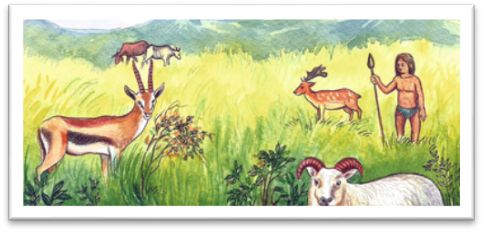
- Which increased the number of dependent on grasslands, such as
- antelope
- deer
- cattle
- goat
- sheep
- Hunters of these animals now started following them.
- Learning about their food habits.
- Their breeding seasons.
- Now people started herding and rearing animals.
- Fishing was also an important activity.
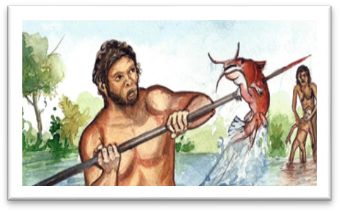
Farmers:
- Several grain bearing grasses grew naturally
- wheat
- barley
- rice

- This led them to grow plants on their own and became farmers.
Herders:
- People started taming animals by leaving food near their shelters.
- The first tamed animal was the wild ancestor of the dog.
- Later, relatively gentle animals who ate grass lived in herds-
- sheep
- goat
- cattle and
- pigs
Domestication: A process in which people grow plants and look after animals.
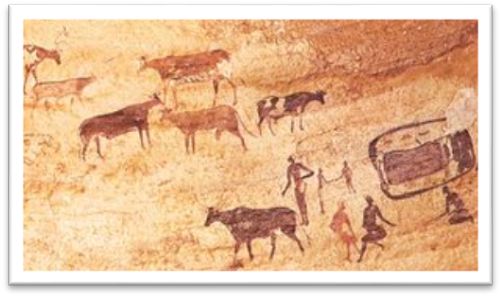
- Gradually plants and animals looked different from their wild variety as they were tamed.
- Then people selected plants and animals for domestication.
- People selected them wisely
- those plants and animals that are not prone to disease
- plants that yield large-
- size grain
- have strong stalks
- capable of bearing the weight of the ripe grain
- Seeds preserved of those plants and sown to ensure new plants with the same qualities.
- Relatively gentle animals were selected for breeding.
- Gradually, domesticated animals and plants become different from their wild ones.
- For example- teeth and horn of the wild animals differ from those of domestic animals.

- Domestication began about 12,000 years ago in various parts of the world.
- All the plants and animal product which we use today is a gradual result of domestication.
- The earliest domesticated plants were wheat and barley whereas domesticated animals were sheep and goat.
Paleolithic site-Hunsgi
PALEOLITHIC SITE – HUNSGI
- Hunsgi is a village in Yadgir district, Karnataka.
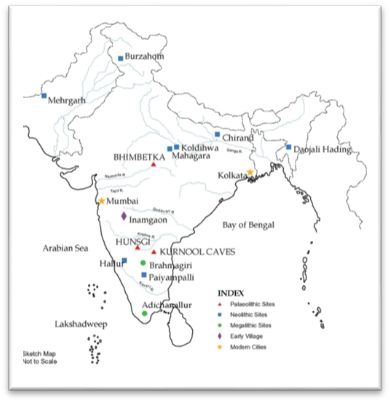
- Numerous early Palaeolithic sites found here.
- Many stone tools, and weapons that are made of reddish-brown chert (a stone) are found at these sites.
- The tools found include long blades with sharp edges and many other instruments for multi-purpose usages.
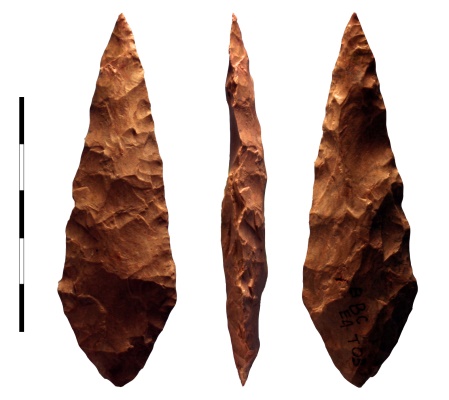
- Most tools were made of limestones which were locally available.
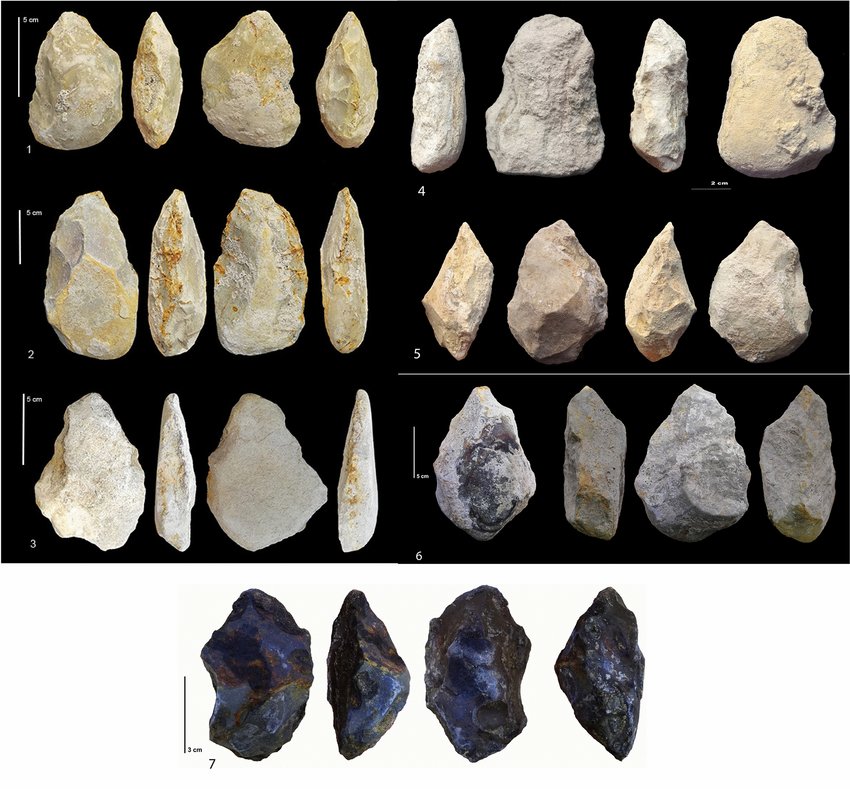

 Indira Gandhi Memorial High School
Indira Gandhi Memorial High School
